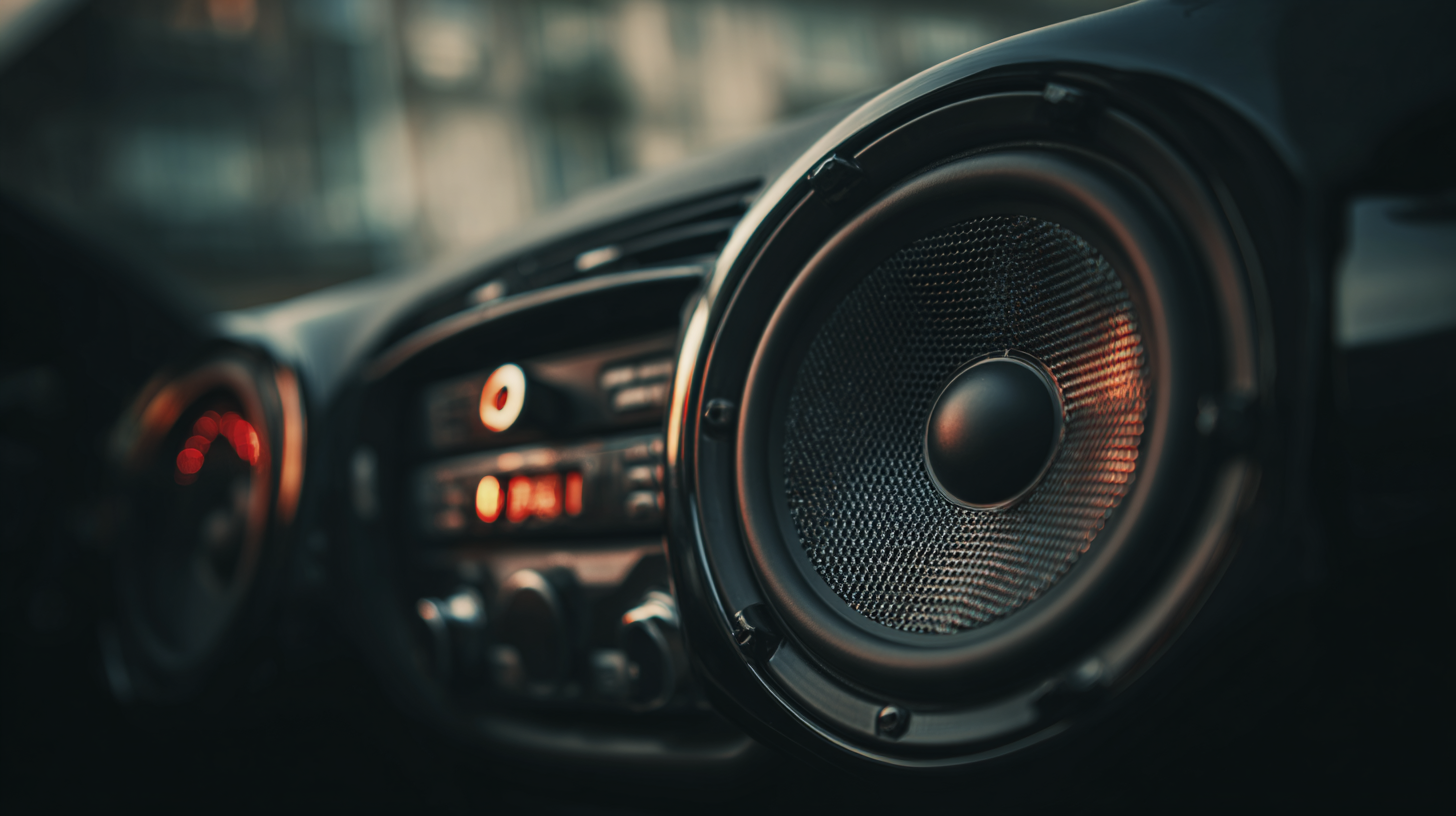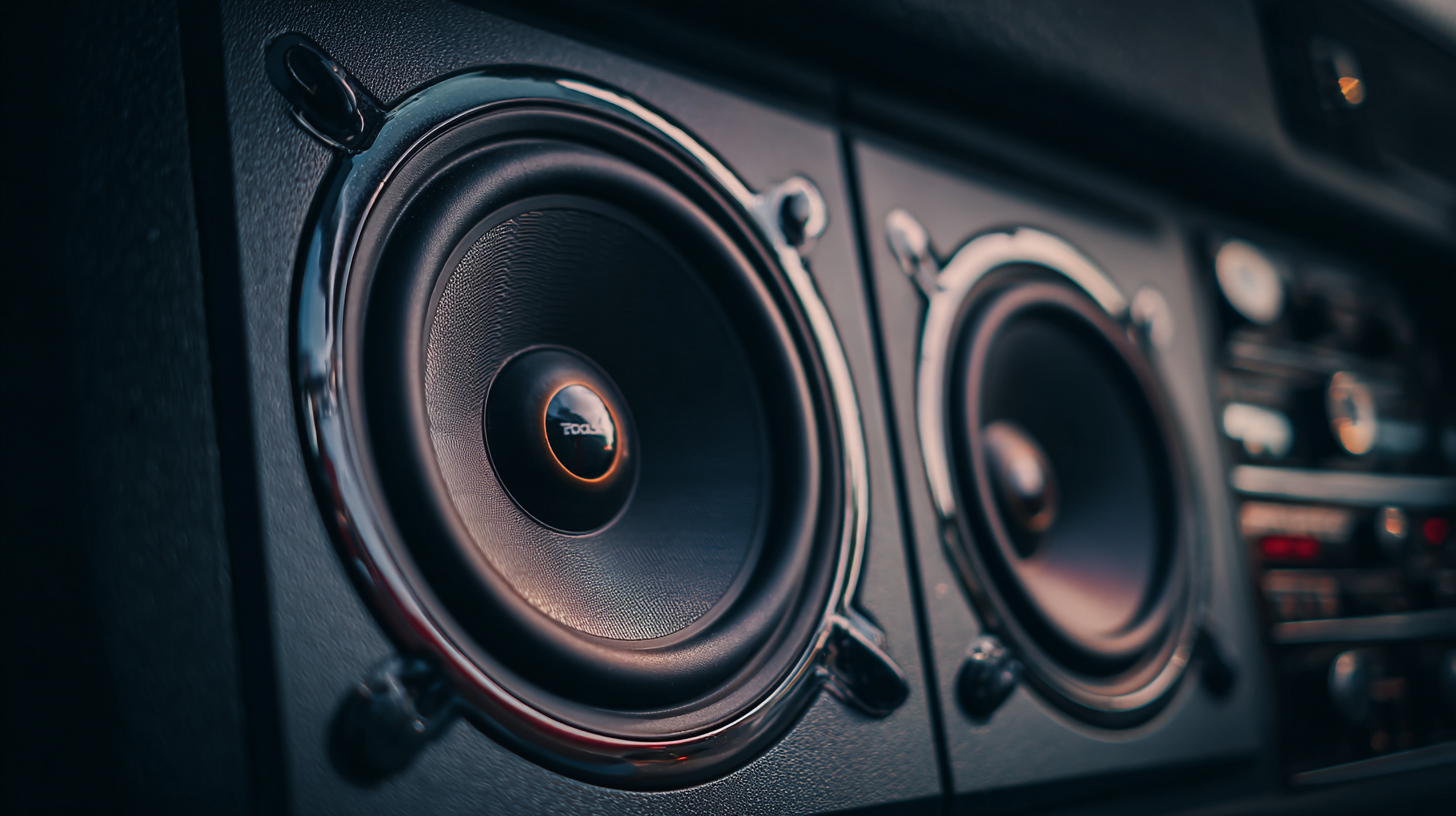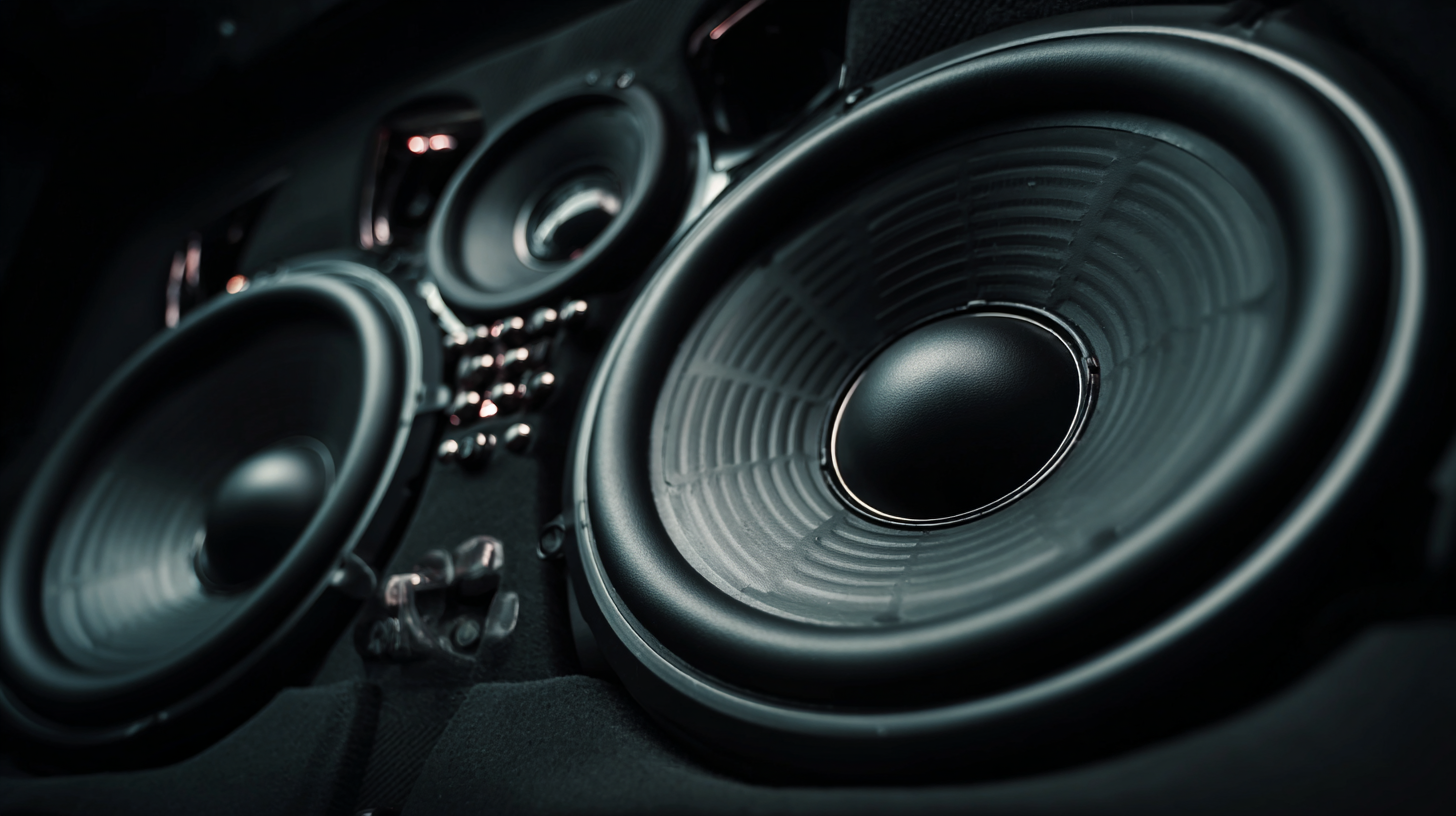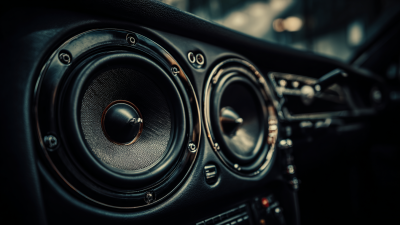What Are Car Audio Component Speakers and How Do They Enhance Your Sound Experience?
 Car audio component speakers are an essential upgrade for any music enthusiast looking to enhance their sound experience while on the road. Unlike standard coaxial speakers, component speakers separate the different audio frequencies, providing clearer and more accurate sound reproduction. This separation allows for dedicated drivers for the highs, mids, and lows, resulting in a fuller sound stage that immerses listeners in their favorite tracks.
Car audio component speakers are an essential upgrade for any music enthusiast looking to enhance their sound experience while on the road. Unlike standard coaxial speakers, component speakers separate the different audio frequencies, providing clearer and more accurate sound reproduction. This separation allows for dedicated drivers for the highs, mids, and lows, resulting in a fuller sound stage that immerses listeners in their favorite tracks.
In this article, we will explore the benefits of car audio component speakers, including improved sound clarity, better frequency response, and customizable installation options. Whether you are a casual listener or an audiophile, understanding how these speakers work can transform your driving experience into a concert-like atmosphere, making every journey enjoyable. Join us as we delve deeper into how car audio component speakers can revitalize your car's audio system and elevate your listening pleasure.
Understanding Car Audio Component Speakers and Their Advantages
Car audio component speakers are designed to provide superior sound quality compared to standard factory speakers. These systems typically consist of separate components for handling the different frequencies of sound: woofers for low frequencies, tweeters for high frequencies, and sometimes mid-range speakers.
According to a report by Research and Markets, the global market for car audio systems is expected to reach $16 billion by 2025, with component speakers being a significant contributor due to their enhanced sound reproduction capabilities.
One of the primary advantages of component speakers is their ability to deliver clearer, more dynamic sound. The separation of different audio frequencies allows for a more precise soundstage, resulting in an immersive listening experience. A study by the Consumer Electronics Association showed that over 60% of car audio enthusiasts prefer component systems for their enhanced performance and customization options. By allowing for speaker placement optimization, component systems can help reduce distortion and improve overall acoustics within the vehicle, making them an ideal choice for audiophiles seeking to enhance their sound experience on the road.
Key Features of Component Speakers That Elevate Sound Quality
Component speakers have gained popularity among car audio enthusiasts due to their ability to significantly enhance sound quality. Unlike full-range speakers, component systems separate the various elements of sound reproduction—such as woofers, tweeters, and crossovers—allowing for better clarity and greater audio fidelity. This separation enables a more accurate soundstage, making it easier to distinguish between different instruments and vocal frequencies. This increased sound precision is a key feature that elevates the overall listening experience in your vehicle.

The car amplifier market, which surpassed USD 2.3 billion in 2024, is projected to grow at a CAGR of around 5.5% from 2025 to 2034. This growth is fueled by the rising demand for high-quality audio systems, with component speakers taking center stage as they require more power to function optimally. Some advanced audio setups now include innovative technologies such as surround sound features, which further enrich the auditory experience. Additionally, partnerships with professional audio solution companies have led to the development of premium in-car audio experiences, highlighting a commitment to providing superior sound quality for all kinds of music lovers.
Comparing Component Speakers with Coaxial Speakers: Which is Better?
When it comes to enhancing your car audio system, the choice between component speakers and coaxial speakers is crucial. Component speakers are designed with separate components for handling different frequencies, typically involving a woofer for lows and a tweeter for highs. This separation allows for clearer and more accurate sound reproduction, making them ideal for audiophiles seeking an immersive listening experience. The installation process might be more complex, but the resulting sound quality is often worth the effort.
On the other hand, coaxial speakers, also known as full-range speakers, combine multiple elements into a single unit. They are more convenient and easier to install, making them a popular choice for casual listeners who prioritize simplicity. While coaxial speakers can provide decent sound quality, they usually lack the depth and precision offered by component speakers. In a direct comparison, component speakers tend to outperform coaxial models in terms of sound clarity and overall fidelity, making them the preferred option for those aiming for a high-quality sound experience in their vehicles.
What Are Car Audio Component Speakers and How Do They Enhance Your Sound Experience? - Comparing Component Speakers with Coaxial Speakers: Which is Better?
| Feature | Component Speakers | Coaxial Speakers |
|---|---|---|
| Sound Quality | Superior clarity and detail | Good, but less detailed |
| Installation Complexity | More complex, requires additional mounting | Easier to install, all-in-one design |
| Price Range | Higher price point | More affordable options available |
| Frequency Response | Wider frequency range | Narrower frequency range |
| Customization | Highly customizable sound settings | Limited customization options |
| Durability | Generally durable, lesser stress on components | Less durable, components can wear out faster |
How to Choose the Right Component Speakers for Your Vehicle
When choosing the right component speakers for your vehicle, it's essential to consider various factors that can significantly affect sound quality. A study by the Consumer Electronics Association (CEA) indicates that high-quality speakers can improve auditory clarity and deliver a richer sound experience, making them a worthwhile investment for any car audio system. Component speakers generally consist of separate woofers, tweeters, and crossovers, allowing for better soundstage and audio imaging. This separation means that each speaker can perform its role more effectively, resulting in a more balanced and immersive listening experience.
Another crucial factor to consider is speaker sensitivity, measured in decibels (dB). According to the International Electrotechnical Commission (IEC), speakers with a sensitivity rating of 87 dB or higher can produce louder sound with less power. This means that investing in high-sensitivity component speakers can enhance your system's performance, especially for users who enjoy high volumes.
Additionally, ensure that the speakers you select are compatible with your vehicle's audio system and can handle the power output of your amplifier. By paying close attention to these specifications, you can optimize your car audio experience and enjoy your favorite music to the fullest.
Tips for Installing Component Speakers for Optimal Performance
Installing component speakers in your vehicle can significantly enhance your audio experience, providing clearer sound and a more immersive environment. According to a report by the Consumer Electronics Association, high-quality audio systems can increase driver focus and reduce fatigue during long commutes by 58%. To achieve optimal performance when installing component speakers, it's crucial to pay attention to the placement and calibration of each speaker. Mounting the woofers in factory locations for mid-bass response and positioning tweeters at ear level can dramatically improve soundstage and clarity.

Another essential tip is to utilize the right amplifier for your component speakers. A dedicated amplifier can deliver cleaner power and greater control, helping to prevent distortion and enhancing dynamic range. Industry data suggests that using an external amplifier can improve sound performance by up to 40% compared to using a head unit’s built-in power. Furthermore, ensuring proper wiring and connection is critical; using high-quality, low-resistance cables will minimize signal loss and interference, thus ensuring that your sound system performs at its best.
Related Posts
-

Ultimate Checklist for Choosing the Best Car Speakers for Your Sound System
-

Top Strategies for Enhancing Your Car Audio Experience with High-Quality Audio Systems
-

Discover the Advantages of Upgrading to Component Speakers for Your Sound System
-

8 Essential Tips for Elevating Your Car Audio Experience
-

How to Choose the Perfect Car Component Speakers for Your Sound System Upgrade
-

How to Choose the Perfect Vehicle Audio System for Your Road Adventures
